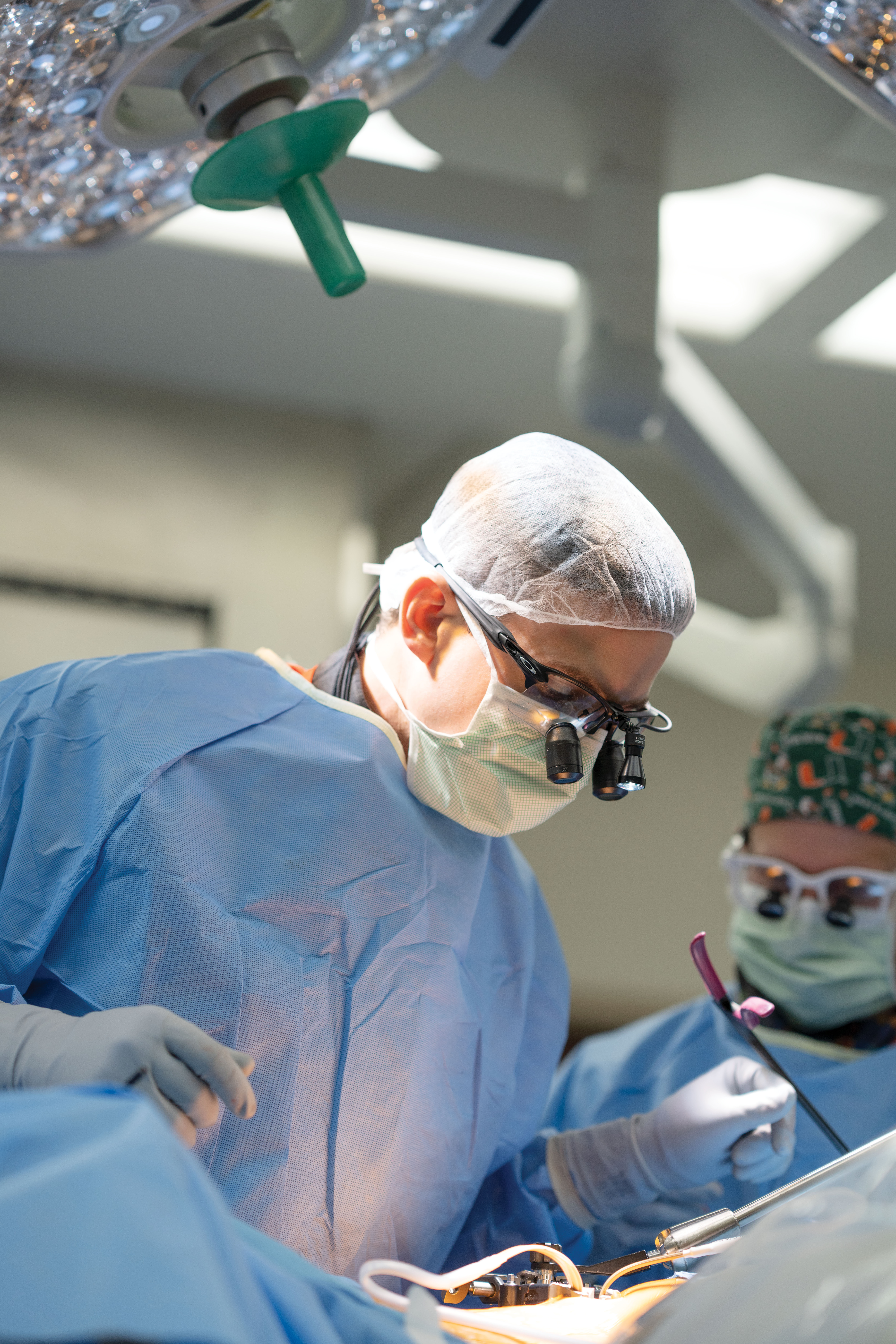Hand function is consistently ranked as the most desired function to regain in the case of impairment due to spinal cord injury (SCI), even above that of bowel and bladder. It stands to reason—with approximately half of SCI occurring in the cervical spine—that The Miami Project to Cure Paralysis researchers have directed their attention on recovery of upper extremity function. Dr. S. Shelby Burks, M.D., a burgeoning academic neurosurgeon in the Department of Neurological Surgery, under Miami Project Clinical Director Allan Levi, M.D., Ph.D., is our site Principal Investigator on a new multi-center nerve transfer clinical trial examining the effect of nerve transfers on reaching and grasping function, and quality of life, in people with tetraplegia.
Traumatic SCI, defined as an injury caused by physical insult to the nerves within the spinal cord, interrupts signals traveling through the central nervous system. In many cases, however, the nerves that exit the spine at nerve root, located below the level of injury are still capable of conducting or transmitting signals. The problem with these nerves is input, not transmission. It has long been established that peripheral nerve axons have the capacity to naturally regenerate—unlike their central nervous system counterparts that will require external modification to do so. Combined, surgeons have realized that peripheral nerves originating from roots above the injury can be cut, repositioned, and then fixed into different peripheral nerve that arises from below the level of injury. This nerve transfer allows for the signal generated by a nerve supplied at a higher level above the injury to be transferred down the nerve normally supplied by a lower level below the injury.
Although numerous clinical trials have been conducted in cervical SCI population, thus far no efficient treatment has been established. The central nervous system, particularly the spinal cord, seems to be extremely challenging when it comes to inducing regeneration. The design of this nerve transfer clinical trial intends to circumvent the issue with as yet unsuccessful attempts to regenerate the spinal cord after the injury. The approach is possible because above the injury, the spinal cord is completely intact, while below the injury, the peripheral nerves are also still capable of sending signals down their axons. Therefore, reattaching a nerve from above the injury, which has seemingly redundant function to the otherwise latent nerve below the injury allows for existing signals to be rerouted to activate previously paralyzed muscles. With targeted motor relearning, the restored signals to sublesional muslces could increase the quality of life of people with SCI.
Nerve transfer surgeries, especially those to treat brachial plexus and peripheral nerve injuries, have become increasingly popular in the last 25 years. When compared to grafting and regeneration strategies within the spine, these surgeries reestablish contraction and functional outcomes over reproducible timelines. Only recently have nerve transfer surgeries been considered as potential treatment options for patients with cervical SCI.
This nerve transfer clinical trial, therefore, aims to broaden the evidence base for the clinical benefits of cervical nerve transfer in tetraplegia. The overall trial, funded by the United States Department of Defense, is headed by Dr. Wilzon Z. Ray, M.D., at Washington University School of Medicine and involves at least eight sites in the United States and Canada with The Miami Project’s efforts lead by Dr. Burks. Soon, once The Miami Project has finalized the regulatory onboarding process, recruitment will begin seeking participants who meet the study’s inclusion criteria. The trial is registered with the U.S. National Library of Medicine under the identifier NCT04023591. This study demonstrates the expanded potential afforded by a diversification of The Miami Project’s portfolio of expertise across various neurological conditions.

